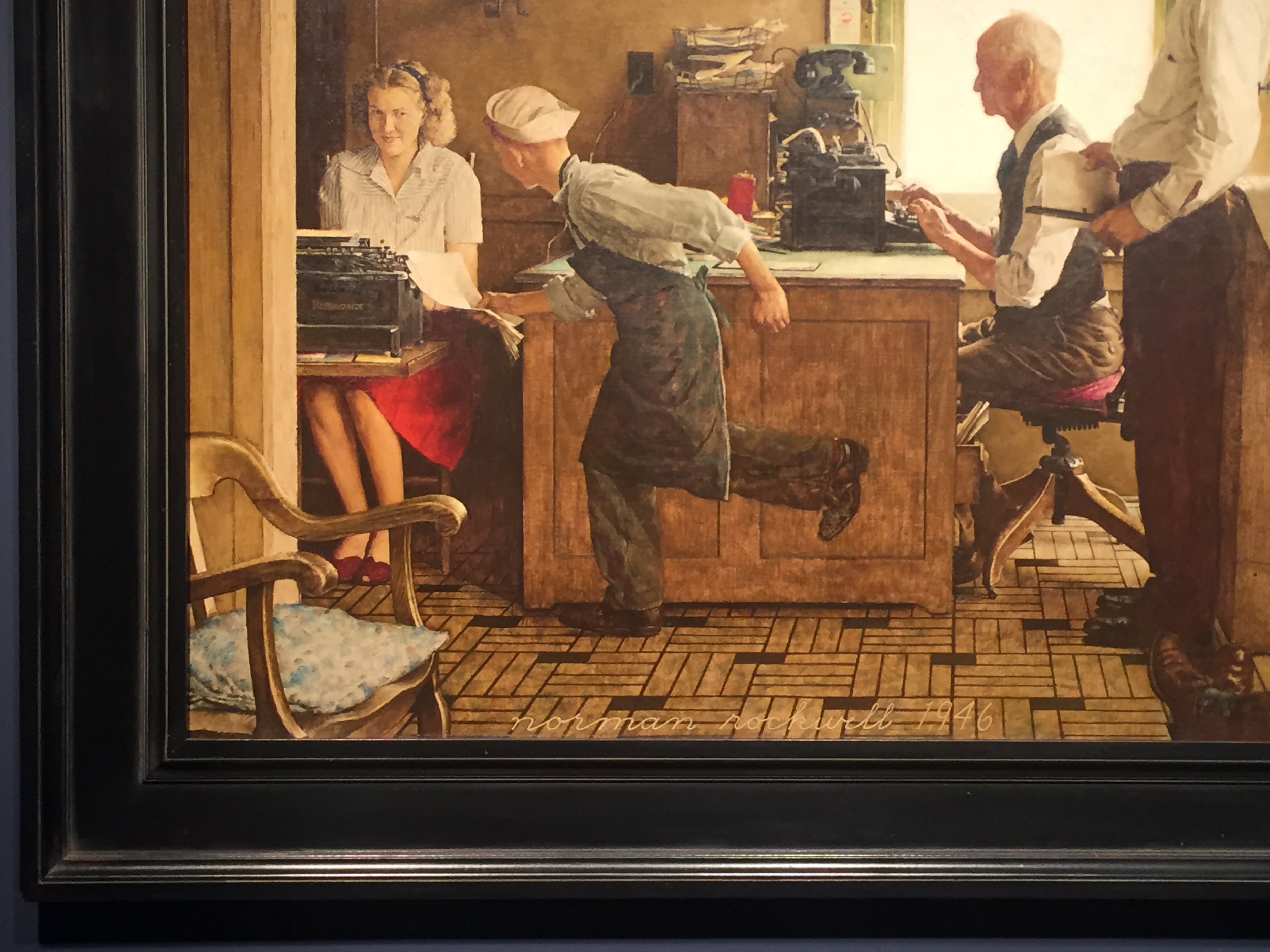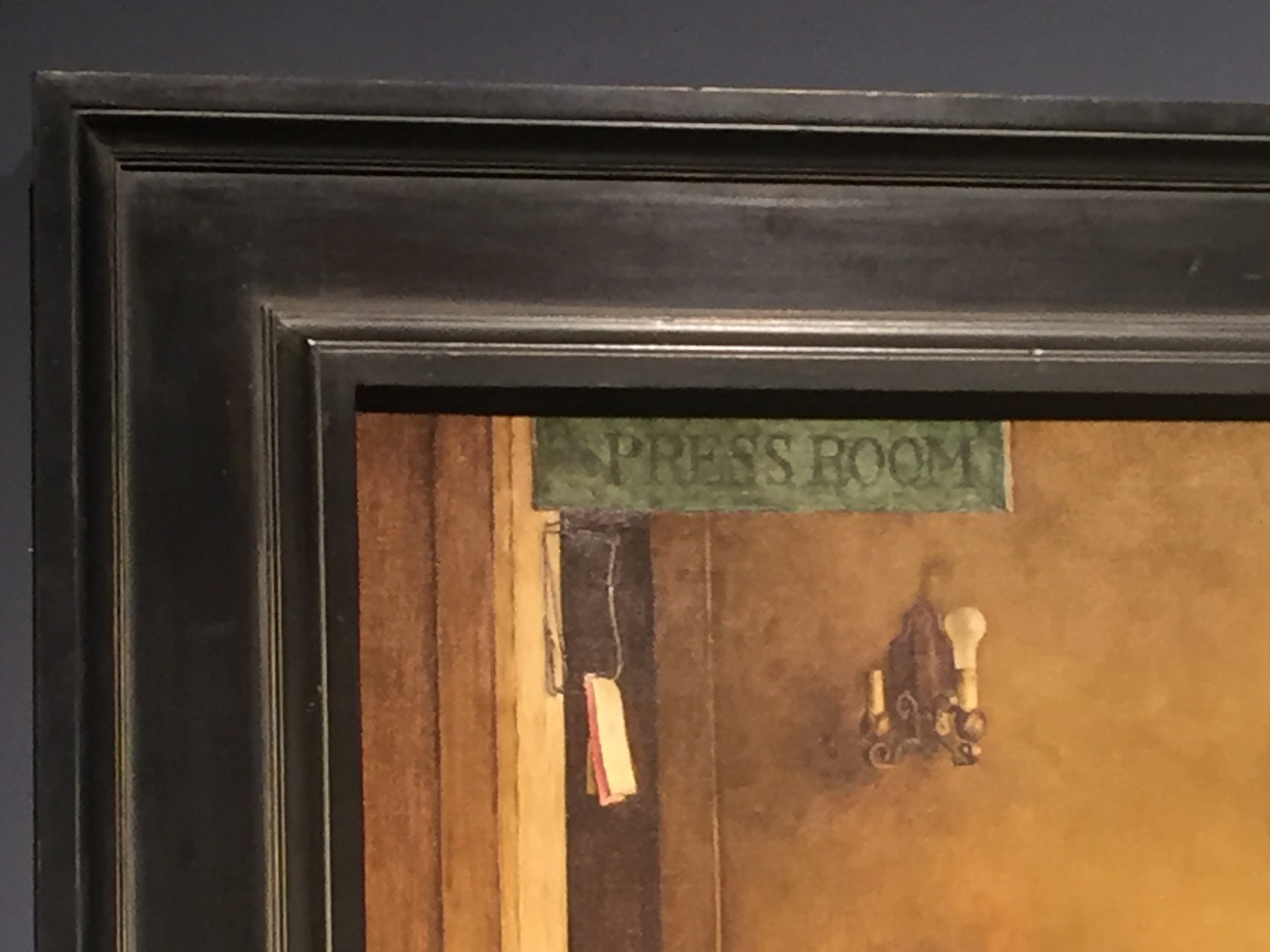CHRISTIE'S NEW YORK
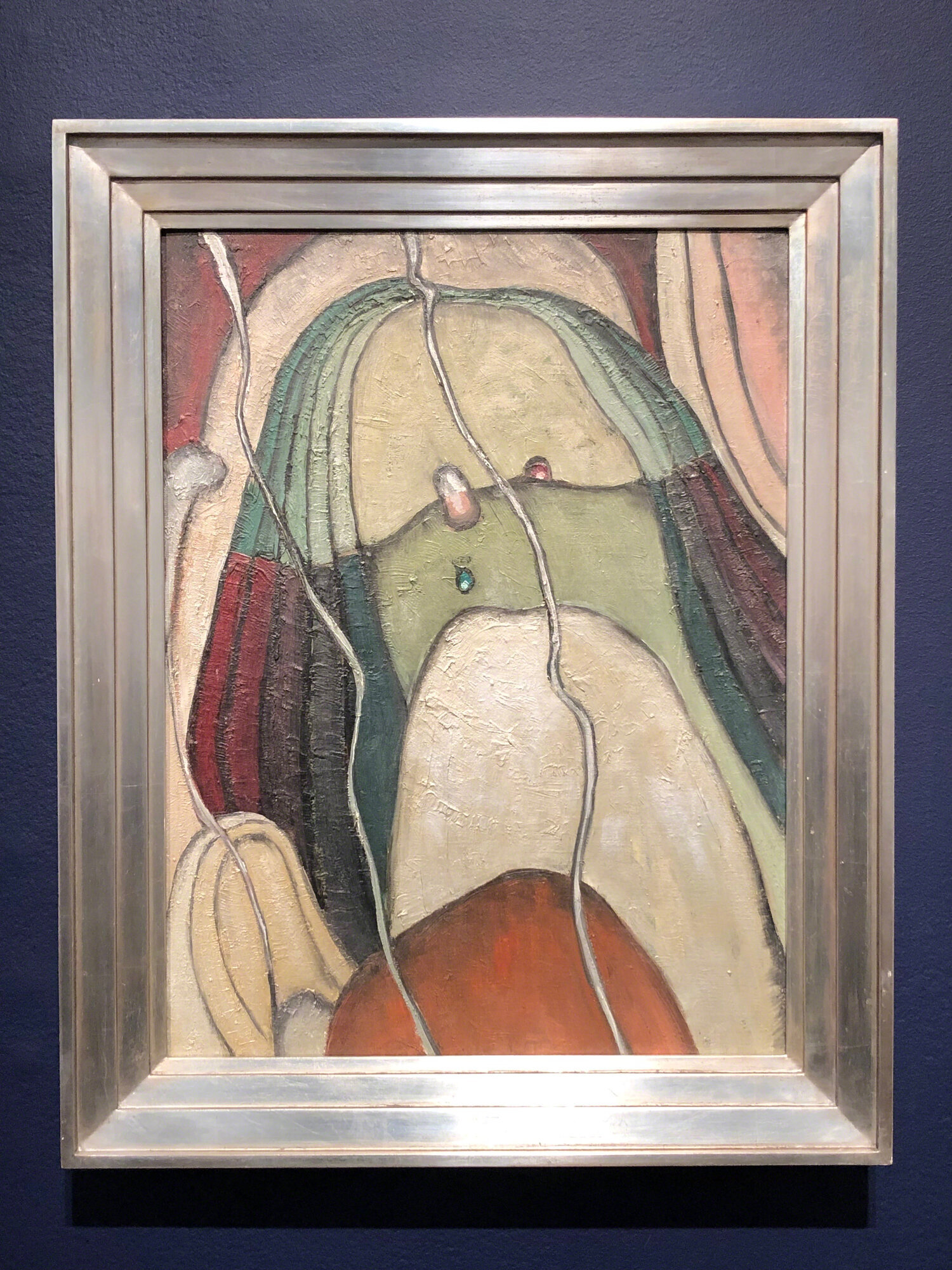
ARTHUR DOVE (1880–1946)
River Bottom, Silver, Ochre, Carmine, Green, oil on canvas, 24 x 18 in. Custom-made replica c. 1920s American Modernist frame; Art Deco; Aluminum leaf on gessoed wood with period patina; Molding width: 2-3/4” Framed by Gill & Lagodich for Christie’s New York, 22 May 2019.
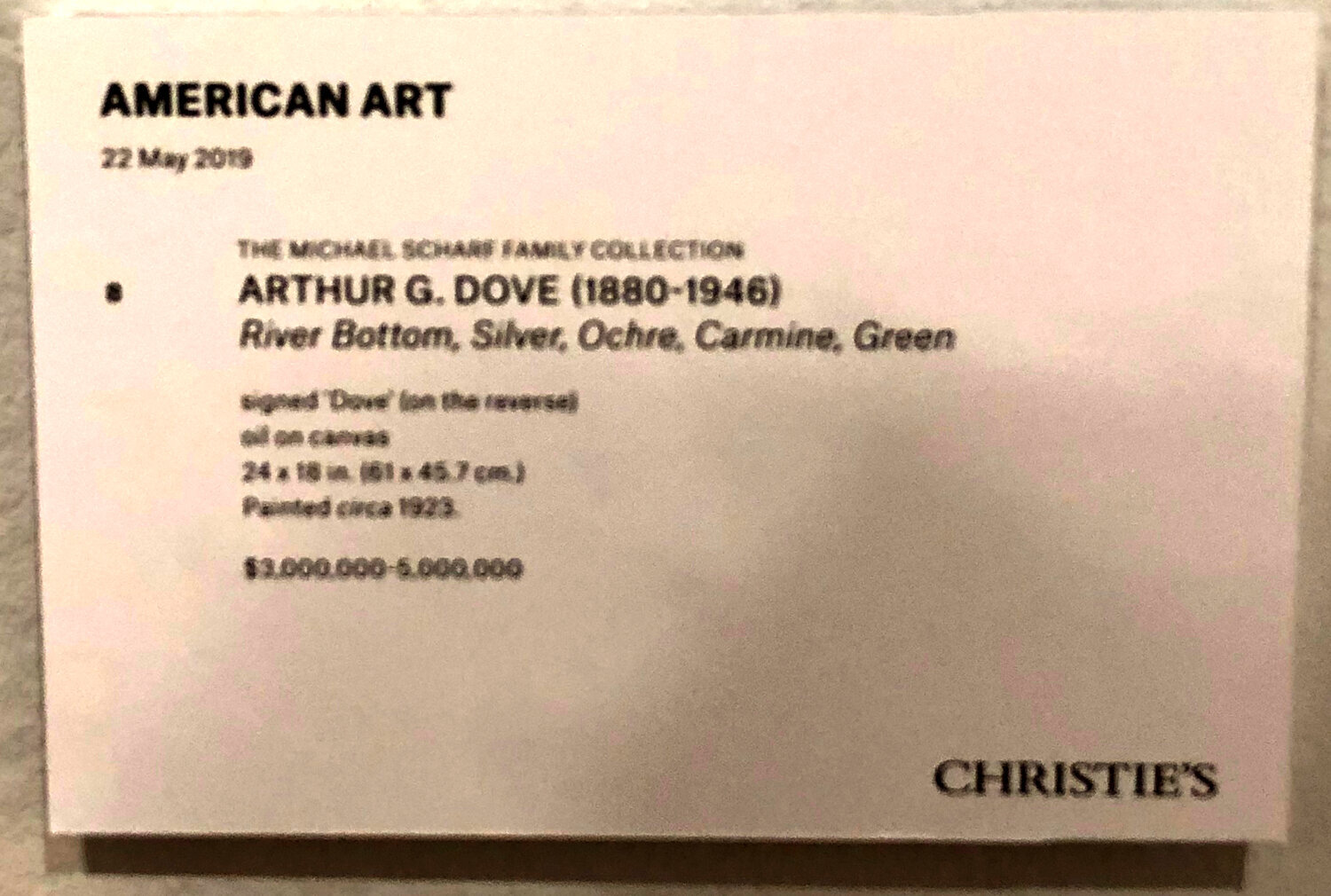
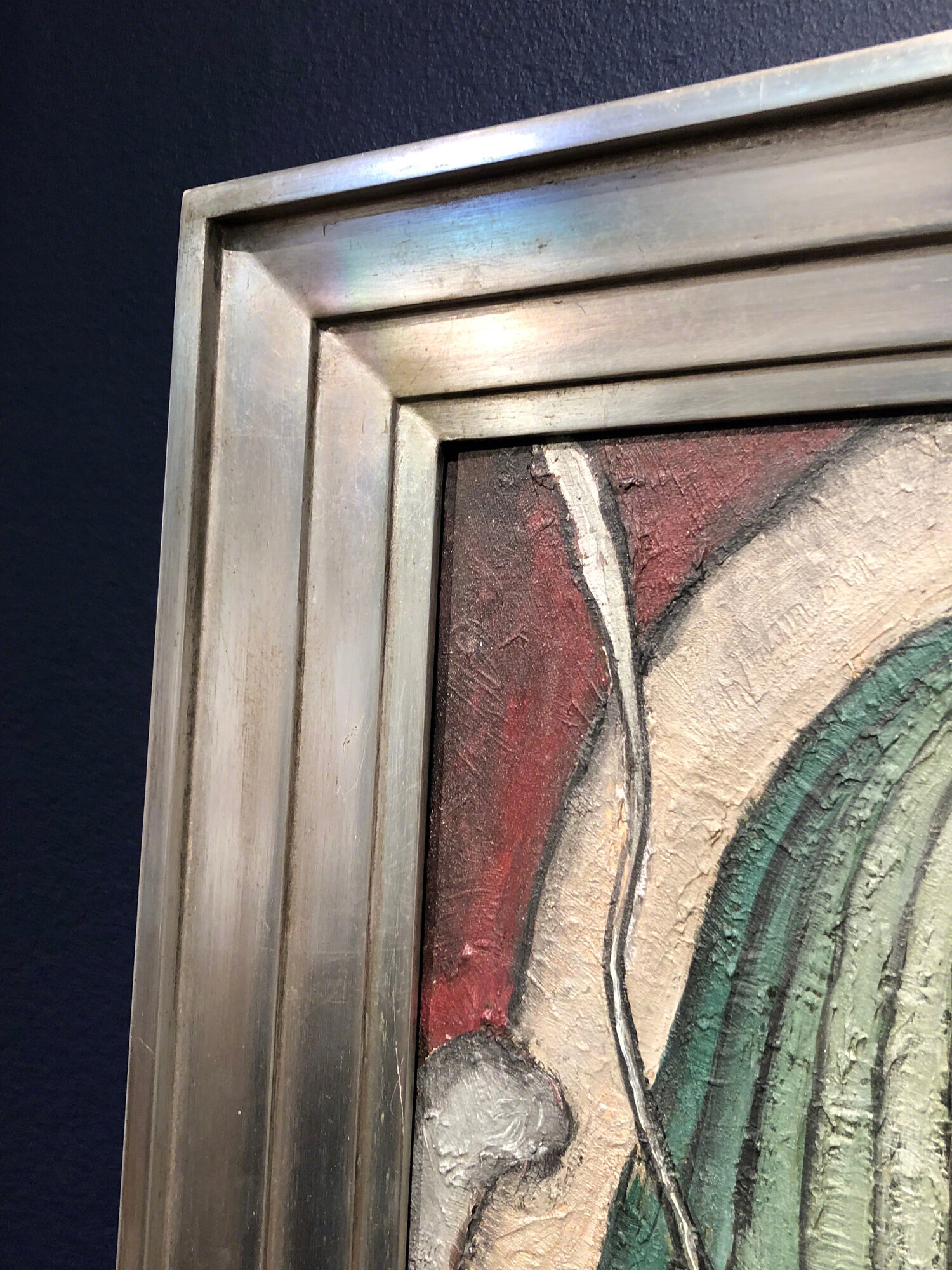
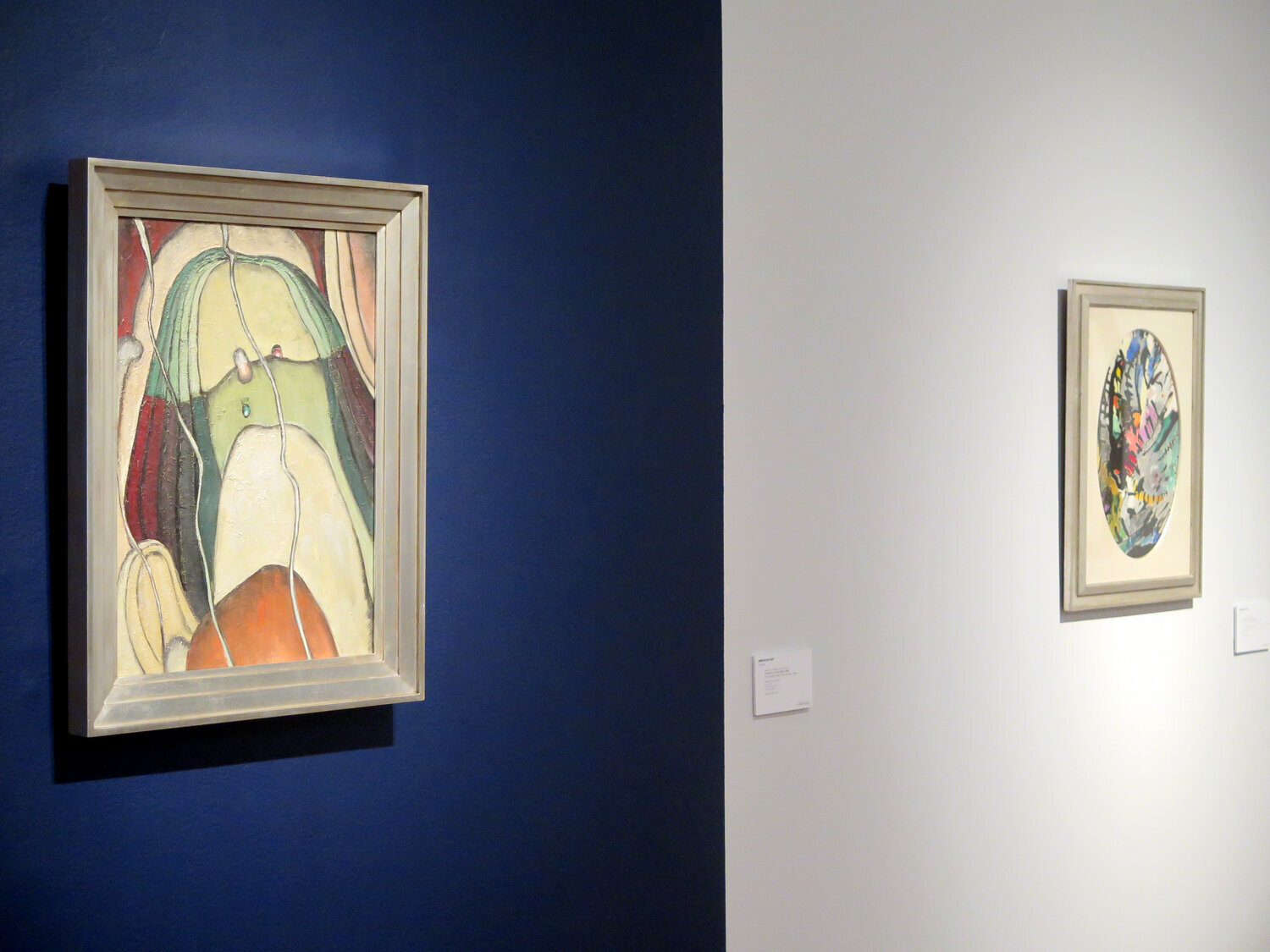
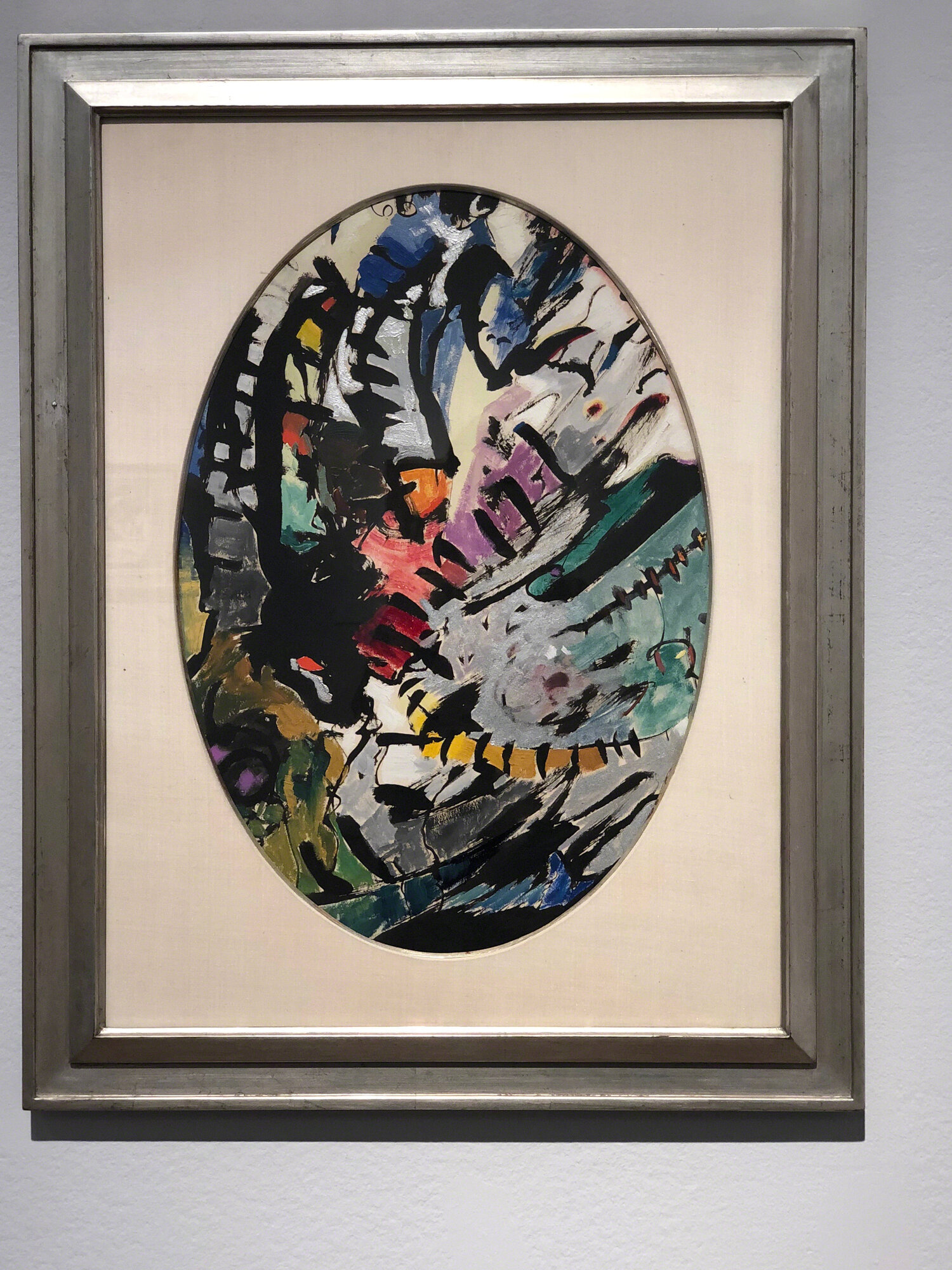
ARTHUR DOVE (1880–1946)
George Gershwin, Rhapsody in Blue Part II, 1927, oil metallic paint, and ink on paper [on Bainbridge board], 20-1/2” x 15-1/2”. Custom-made replica c. 1920s American Modernist frame, silver leaf on wood, modified geometric cassetta profilem, molding width: 2” Framed by Gill & Lagodich for Christie’s New York, 22 May 2019.
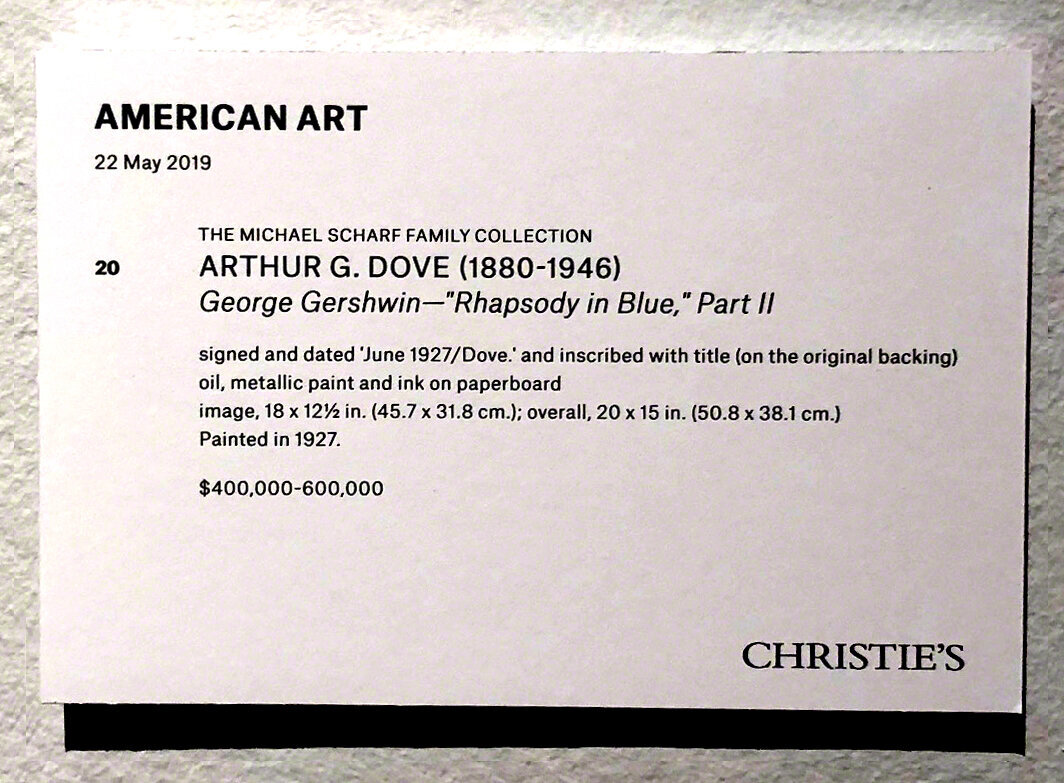
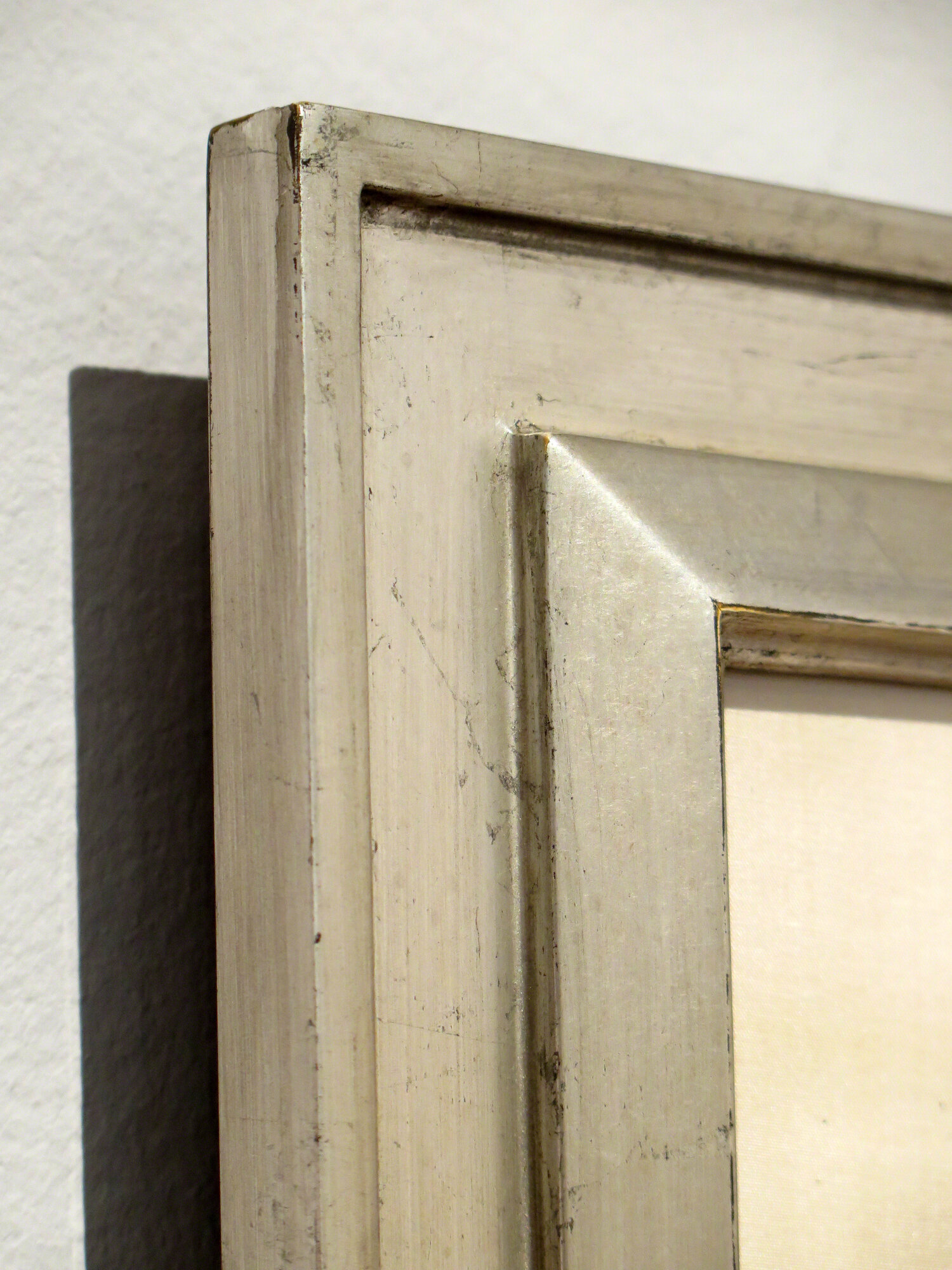

AMMI PHILLIPS (1788-1865)
Woman With Pink Ribbons, painted circa 1833, oil on canvas, 31-3/4 x 27 in. Custom-made replica early 19th-century American molding frame: ebonized wood, wide flat profile with gilded bead at back and sight edges; molding width 3-1/2” Framed by Gill & Lagodich for Christie’s New York. Painting: The Collection of Peter and Barbara Goodman, January 20, 2022, Lot 133, Estimate USD 800,000-1,200,000 Price realized USD 3,870,000
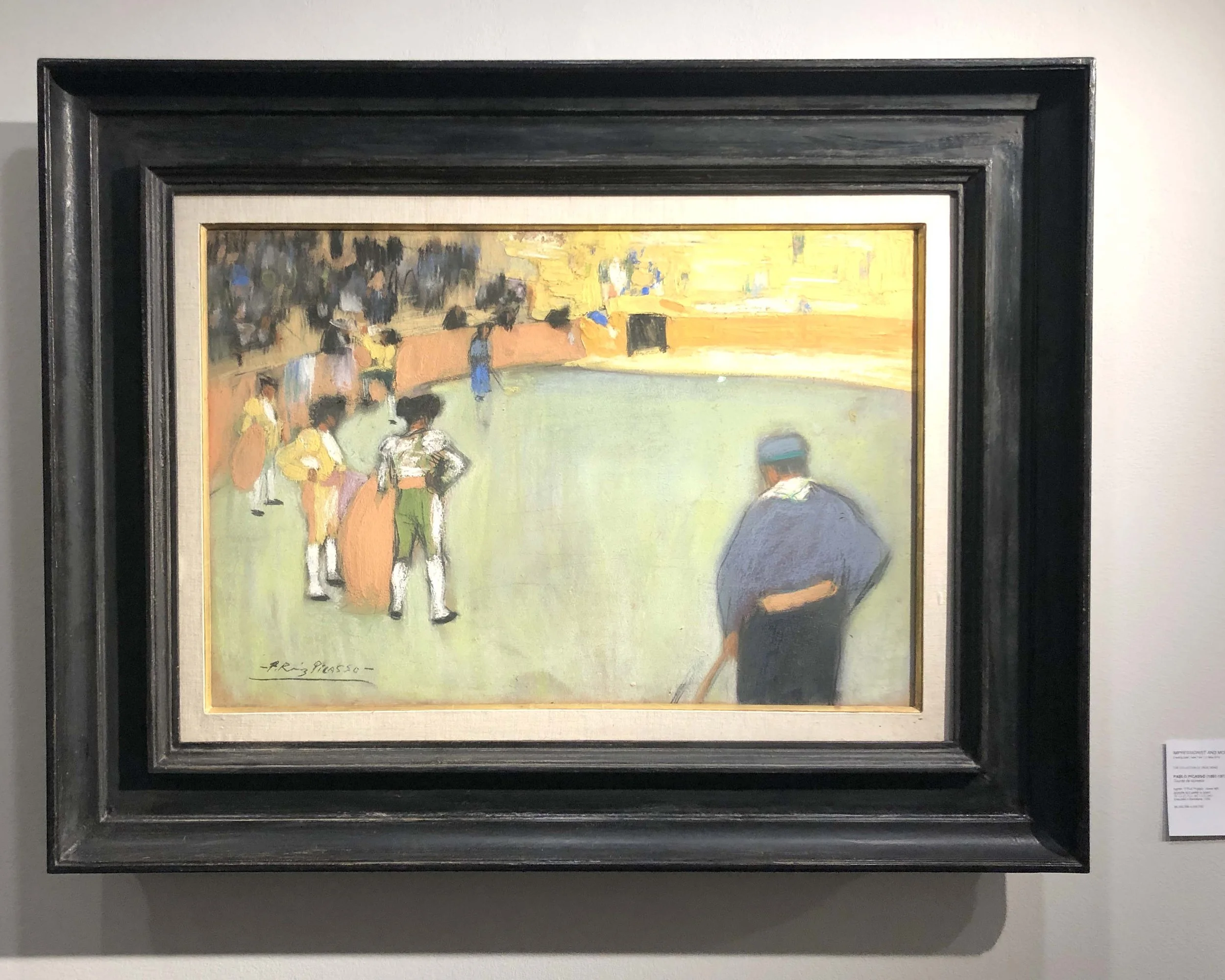
PABLO PICASSO (1881–1973)
Course de Taureaux, gouache and pastel on board, 18-1/2 x 27-1/2 in., executed in Barcelona, 1900. Custom replica frame, 17th-century Spanish, ebonized carved wood, molding width 4-5/8 in. (Note pastel retains old cloth liner insert.)
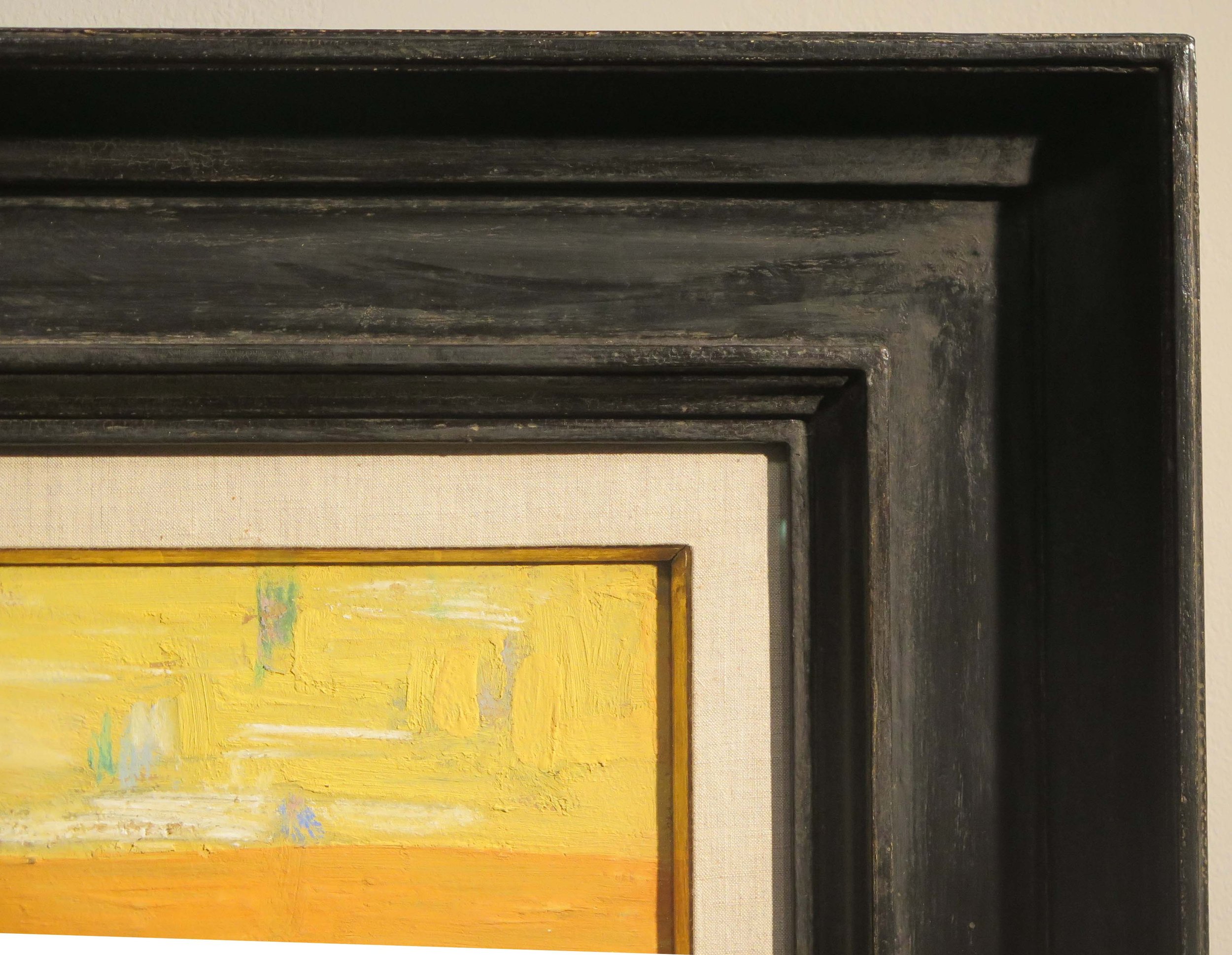

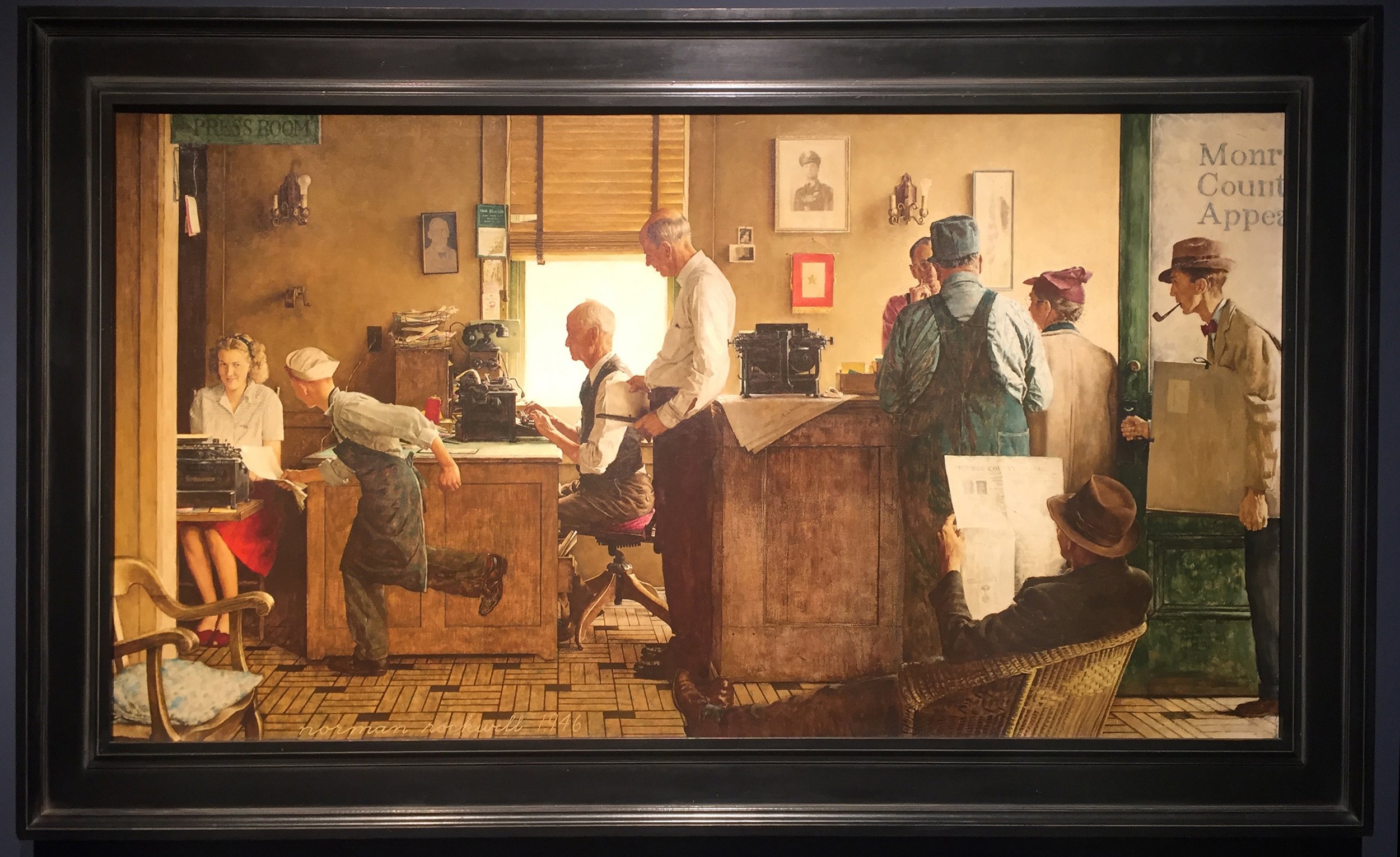
NORMAN ROCKWELL (1894–1978)
Norman Rockwell Visits A Country Editor, 1946, oil on canvas, 33 x 63 in. Framed by Gill & Lagodich for Christie’s, custom-made replica Early 20th-century American Arts & Crafts frame. Original Maxfield Parrish frame design, c1909 from Jack-the-Giant-Killer. Milled and polychromed wood. Molding width: 5 in. AUCTION 18 NOV 2015 Price realised USD 11, 589,000. “Norman Rockwell painted Norman Rockwell Visits a Country Editor for the May 25th, 1946 issue of The Saturday Evening Post. By 1946, not only had Rockwell’s myriad covers of The Post captured the imagination of the nation, but the artist was becoming a celebrity in his own right. Perhaps just as importantly, Rockwell’s work adopted a new sense of earnestness in order to more accurately reflect the realities that many faced in post-War America. While Rockwell’s classic sense of idealism remained intact, his imaginative images confronting issues of the present allowed the public to identify with his interpretation of life in America. Christopher Finch writes, “The period from the mid-forties until the late-fifties was perhaps Rockwell’s time of greatest achievement.” (Norman Rockwell’s America, New York, 1975, p. 31) Conceived during this important era of his storied career, Norman Rockwell Visits a Country Editor is a nostalgic tableau of a small country town and its local newspaper, which captures the spirit of America adapting to life after World War II. American illustration holds a special place within the context of American art. Before television entered the American home, newspapers and magazines were the primary news sources for the nation. They were also the barometer of public opinion, and naturally, the artists who illustrated these periodicals had a great deal of influence on the perception of their nation. Norman Rockwell did more than simply fulfill his commissions; rather, he understood his advantageous position and put his best efforts into his work. He stated, "No man with a conscience can just bat out illustrations. He's got to put all of his talent, all of his feeling into them. If illustration is not considered art, then that is something that we have brought upon ourselves by not considering ourselves artists. I believe that we should say, 'I am not just an illustrator, I am an artist.'"(as quoted in J. Goffman, The Great American Illustrators, New York, 1993, p. 122) As artists often do, Rockwell drew inspiration for his illustrations from his own life and experiences. While he largely retained an unsentimental view of his childhood, he affectionately recalled his family’s summer trips to the Adirondack Mountains, which provided a welcome escape from life in New York City: “In the city we kids delighted to go up on the roof of our apartment house and spit down on the passers-by in the streets below. But we never did things like that in the country. The clean air, the green fields, the thousand and one things to do…got somehow into us and changed our personalities as much as the sun changed the color of our skins.” (N. Rockwell, Norman Rockwell: My Adventures As an Illustrator, New York, 1988, p. 34) In these rural settings, Rockwell discovered an idealized form of life that suited his disposition and held his fascination for years to come. Everyday scenes and people, first appreciated by the artist at a young age, manifested themselves in his most iconic works and allowed his paintings to become both universal and relatable. While Rockwell’s characteristic view of American life had its basis in his childhood, in 1939, he sought new surroundings that would inspire further development in his work, having grown restless in New Rochelle, New York. The small town of Arlington, Vermont, with its distinct New England feel appealed to Rockwell, his wife Mary and their three sons, and his arrival precipitated an improvement in his creativity and motivation. Shortly thereafter, he also began actively travelling the country for inspiration. Between 1943 and 1948, he toured as far south as Georgia and as far west as Missouri to capture the lives of everyday Americans in an eight part pictorial series for The Post. Through these eight images the readers of The Post learned what it was like to spend a night on a troop train with paratroopers (A Night on a Troop Train, 1943, unlocated); wait to see the President of the United States (So You Want to See the President, 1943, Office of the White House, Washington, D.C.); appeal to a ration board (Norman Rockwell Visits a Ration Board, 1944, Private Collection); register to vote at a polling station (Norman Rockwell Paints America at the Polls (Election Day), 1944, Cedar Rapids Art Museum, Cedar Rapids, Iowa); observe the daily operation of a small town newspaper (the present work); watch a lesson in a rural classroom (Norman Rockwell Visits a Country School, 1946, Private Collection); visit a family doctor in a Vermont town (Norman Rockwell Visits a Family Doctor, 1947, Norman Rockwell Museum, Stockbridge, Massachusetts) and travel with a county agricultural agent as he performs his duties (Norman Rockwell Visits a County Agent, 1948, Sheldon Museum of Art, University of Nebraska, Lincoln, Nebraska). Through wars, depression, and civil strife, Rockwell portrayed subjects inspired by ordinary, everyday life and this series was a perfect representation of his contribution. In regards to this painting and the others from the series, Rockwell described, “During the 1940’s I did a series of pictorial reports for the Post, variously entitled ‘Norman Rockwell Visits a Country School,’ ‘Norman Rockwell Visits his Family Doctor,’ and so on. Each report consisted of a full page spread, and two pages of black and white sketches…I usually spent two days at the scene of the report. During the first day I tried to get the feel of the place and rough out in my mind the story I wanted to tell. The second day I made sketches, decided on the subject and setting of the painting, and had photographs taken. Back in my studio I did the painting and made the finished sketches. I enjoyed doing these reports. They were a pleasant and stimulating change from my regular work…and gave me a chance to travel about the county and meet a lot of people.” (as quoted in R. Schick, Norman Rockwell: Behind the Camera, New York, 2009, p. 51) In Norman Rockwell Visits a Country Editor, Rockwell captures the office and daily operation of the Monroe County Appeal, a local newspaper founded in 1867 and based in the small town of Paris, Missouri. The focal point of the picture, seated at the central typewriter and set before the office window, is longtime editor of the Appeal, Jack Blanton. The Post captioned the painting: “Blanton is shown batting out a last-minute editorial. That picture above his desk is one of his father, who founded the Appeal. The gold-star service flag hangs beneath the picture of a grandson of Blanton’s, who would have succeeded him as editor if he hadn’t lost his life in the Army Air Force. Peering over Blanton’s shoulder is the Appeal’s printer, Paul Nipps, whose experienced eye is gauging the number of printed lines the editorial will take up.” (The Saturday Evening Post, New York, 1946, p. 25). At the left side of the painting, a young boy, aware of the looming press deadline, races through the office under the watchful eye of a young female reporter. At the right side of the image, two local residents are purchasing a subscription to the Appeal, while a seated customer with legs extended intently reads the paper, reporting the untimely passing of President Franklin D. Roosevelt. Ron Schick notes, “The lead story ‘End Comes to President’ and photographs of FDR and his successor, Harry S. Truman, are visible on the front page.” (Norman Rockwell: Behind the Camera, p. 51) Meanwhile, Rockwell himself strides through the door with a portfolio wedged under his arm and a trademark pipe jutting from his mouth. Painted with an acute attention to detail, every element of the painting was carefully considered and rendered with a high degree of clarity. The extraordinary detail in every vignette of Rockwell’s best works from the 1940s, such as Norman Rockwell Visits a Country Editor, is a result of a profound shift in his working methods around the time of the artist’s move to Arlington. In New Rochelle, Rockwell relied upon professional models, enlisting them for hours until he achieved the desired effect in his paintings. Then, around 1937, Rockwell began to incorporate photography into his creative process. This method meant he could stage elaborate tableaus as subjects and capture the various expressions of his sitters in an instant. Rarely satisfied with a single photograph, the finished illustration was often a composite of many. Indeed, nearly one hundred preparatory photographs were taken for the present work. David Kamp writes of this exhaustive creative system, “First came brainstorming and a rough pencil sketch, then the casting of the models and the hiring of costumes and props, then the process of coaxing the right poses out of the models, then the snapping of the photo, then the composition of a fully detailed charcoal sketch, then a painted color sketch that was the exact size of the picture as it would be reproduced, and then, and only then, the final painting.” ("Norman Rockwell's American Dream," Vanity Fair, November 2009, p. 5) This new approach, coupled with towns around the country full of fresh faces willing to pose for the celebrity artist, meant a flurry of artistic inspiration. "While Rockwell found the perfect settings for works such as Homecoming Marine and Shuffleton's Barbershop close to home, he was willing to travel any distance for his location photography. He went to New Mexico to photograph a train station for Breaking Home Times, the White House for So You Want to See the President!, the offices of a Missouri Newspaper for Norman Rockwell Visits a Country Editor, and New York City to shoot a Times Square restaurant intended for Saying Grace. In so doing, Rockwell gained more than photographs of a background that met his demand for genuineness." (Norman Rockwell: Behind the Camera, p. 98) Covering a sweeping range of topics, including the difficult subject of war, Rockwell helped forge a national sense of identity through his art. Finch writes, “World War II played a very strange role in Rockwell’s career. Rockwell is far from being a warlike person; he is, on the contrary a gentleman in the literal sense of the word. Yet the war brought out the best in him and turned him toward the naturalistic portrait of home-town America which he put to good use in the decades that followed. His immediate contribution to the war effort on the home front was quite considerable. What is most important about his period, in relation to his career as an illustrator, is the fact that he was given an opportunity to prove to himself and to others that he was capable of dealing with serious subjects without abandoning the human touch which had always been his trademark.” (Norman Rockwell’s America, p. 200) Norman Rockwell's portraits of America are both a faithful historical record of, and a tender tribute to, American popular culture. "His subject was average America. He painted it with such benevolent affection for so many years that a truly remarkable history of our century has been compiled. Millions of people have been moved by his picture stories about pride in country, history, and heritage, about reverence, loyalty, and compassion. The virtues that he admires have been very popular, and because he illustrates them using familiar people in familiar settings with wonderful accuracy, he described the American Dream." (T.S. Buechner, Norman Rockwell: A Sixty Year Retrospective, New York, 1972, p. 13) The scope of Rockwell’s appeal continues to grow as new generations live through the same quintessentially American types of experiences that he so faithfully depicted in his art.” —Christie’s Lot Essay
